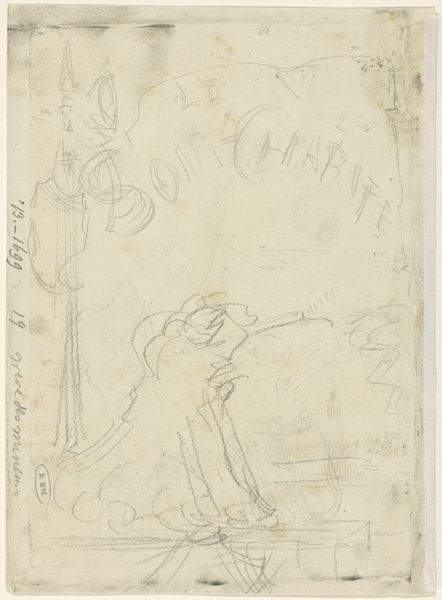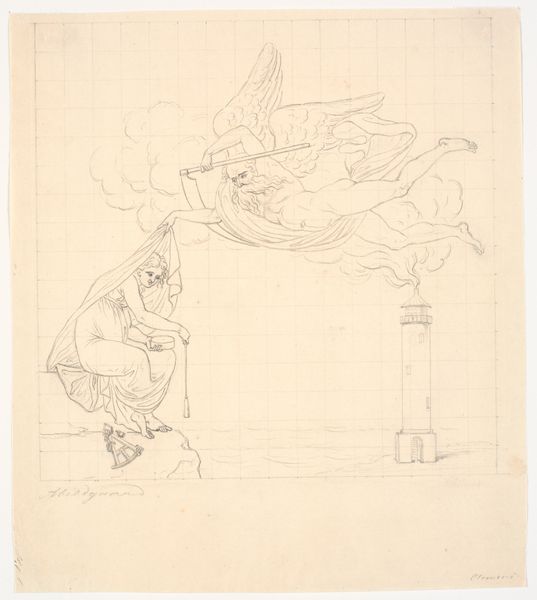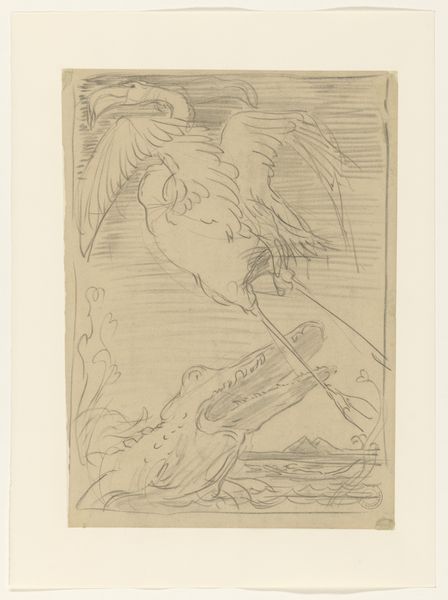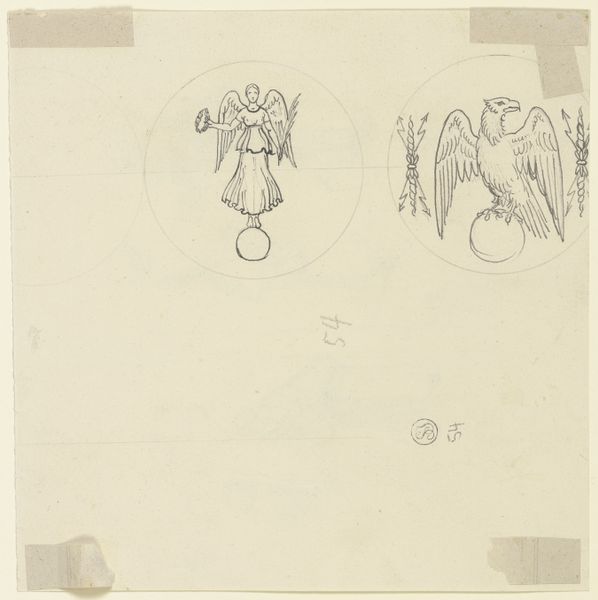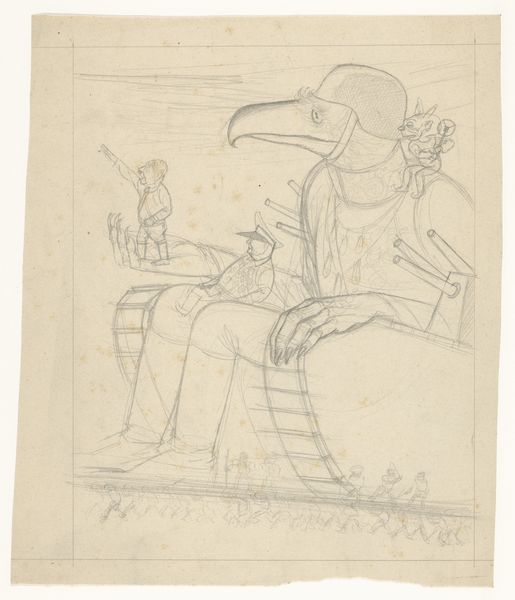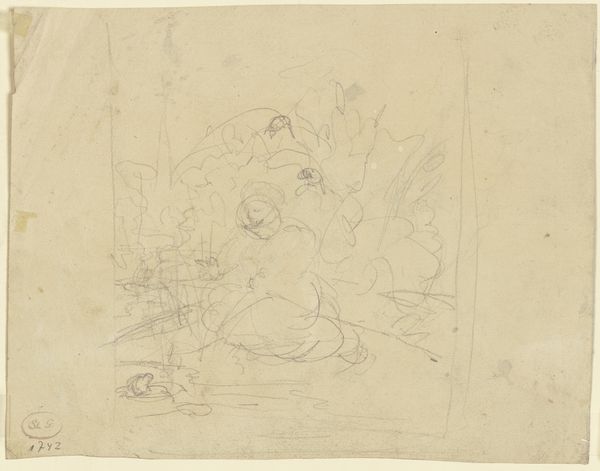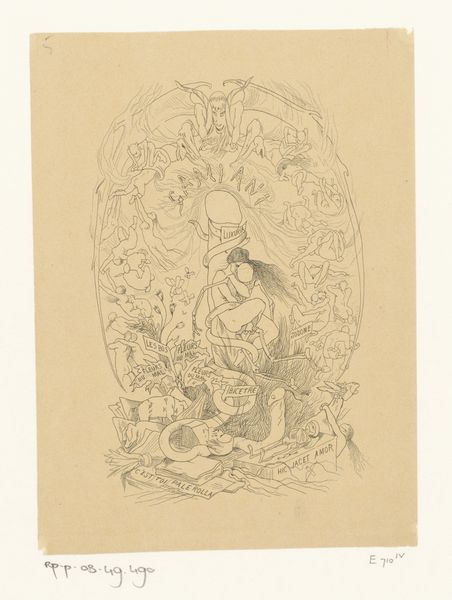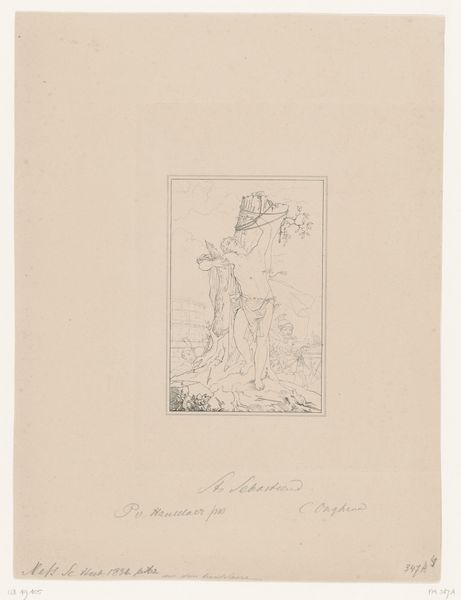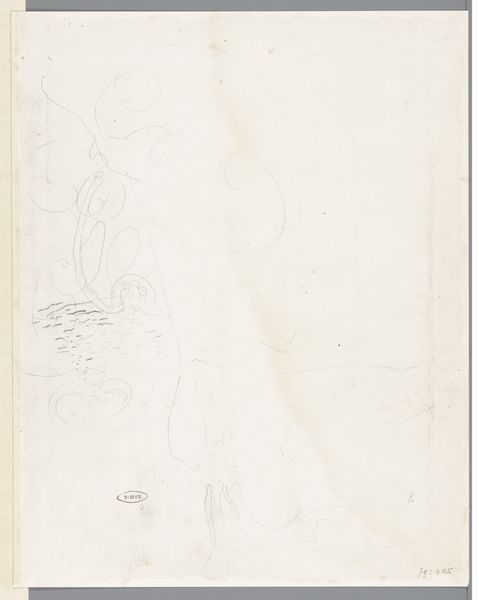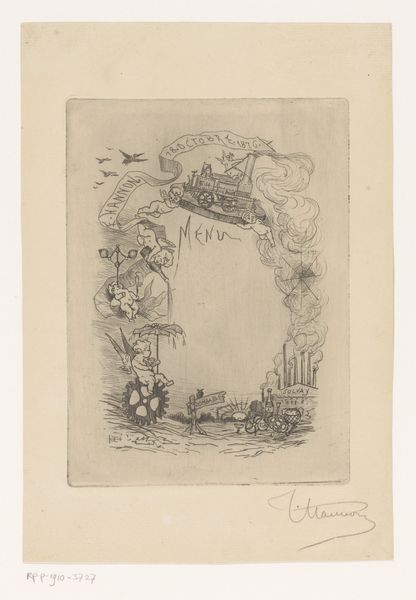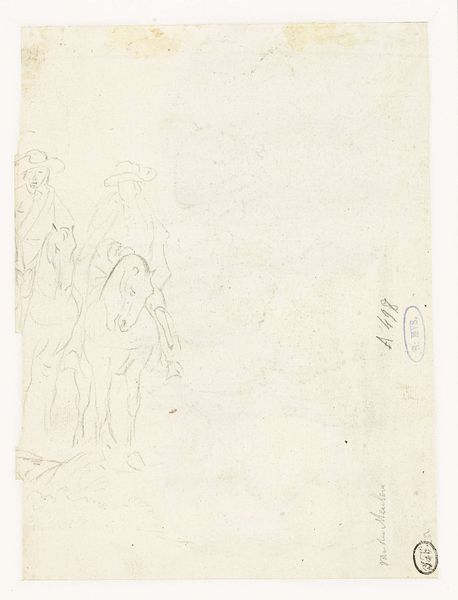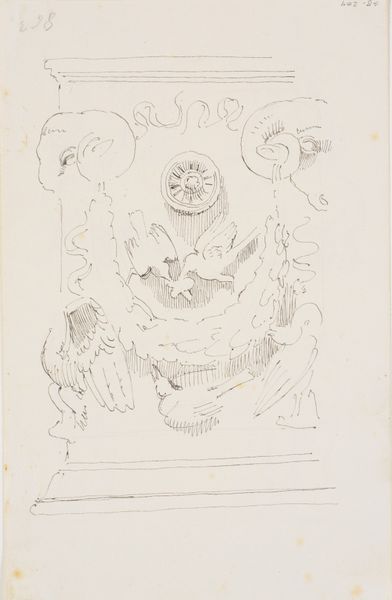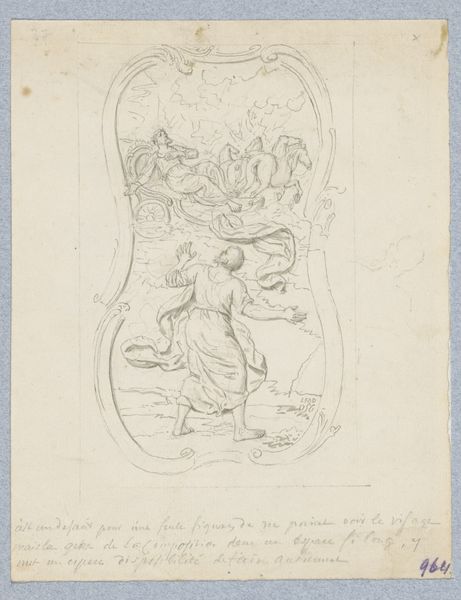
Schets voor een niet-gebruikt ontwerp voor het blad mei in de kalender 1907 1906 - 1907
0:00
0:00
drawing, paper, pencil
#
drawing
#
figuration
#
paper
#
pencil
#
symbolism
Dimensions: height 450 mm, width 217 mm
Copyright: Rijks Museum: Open Domain
Curator: This is a preparatory sketch by Theo van Hoytema from 1906-1907. It's titled "Sketch for an unused design for the month of May in the 1907 calendar" and we're seeing it today, appropriately enough, here at the Rijksmuseum. It’s pencil on paper. What’s your immediate impression? Editor: Fragile. And wistful. It’s the kind of drawing that makes you want to rummage through old attic boxes, doesn’t it? Find hidden letters and faded ribbons. Curator: Yes, a beautiful, unassuming sketch. Hoytema was a key figure in Dutch symbolism. And it reminds us that the applied arts – things like calendars, advertisements – provided crucial avenues for artistic experimentation at the time. This sheet, though just a preliminary drawing, encapsulates that interplay of art and everyday life. Editor: There's a charming awkwardness to the birds, particularly the one with its beak wide open like it's yelling. It doesn't feel…polished. Raw, even. Were those sorts of calendar designs common back then, highlighting natural elements? Curator: Indeed. Nature played a significant role in Symbolist art, a way of moving away from industrial society toward representing something pure, even spiritual. These types of images would evoke certain seasonal activities tied to nature, farming, even the weather. But these calendars also participated in something broader: creating national imagery around ideas of Dutch identity at the turn of the century. Editor: It makes me think of a naturalist journal. Something Darwin might’ve doodled in between meticulous observations. Do you think there's a push and pull here, a tension between art serving a social function through the calendar versus the artist simply creating, or perhaps being drawn to birds for their artistic or creative inspiration? Curator: Absolutely. It speaks to how artistic practices became interwoven with larger processes of visual communication. Mass media and the design and advertising industries at that moment relied increasingly on artist-designers for creative output, commissioning people like Hoytema who brought not only technical expertise but that connection with nature and with wider notions of Dutch identity to it all. It becomes harder and harder, really, to say that something is 'purely artistic' when art can have so many jobs at once. Editor: Which means every calendar is potentially a revolutionary act! That gives me something to ponder the next time I’m scheduling a dentist appointment. It's fascinating to consider it as both an intimate sketch and as a statement about the times. Curator: Precisely. I see these connections – artistic, personal, socio-political – adding extra layers to a design that at first glance seems like just birds on paper.
Comments
No comments
Be the first to comment and join the conversation on the ultimate creative platform.
